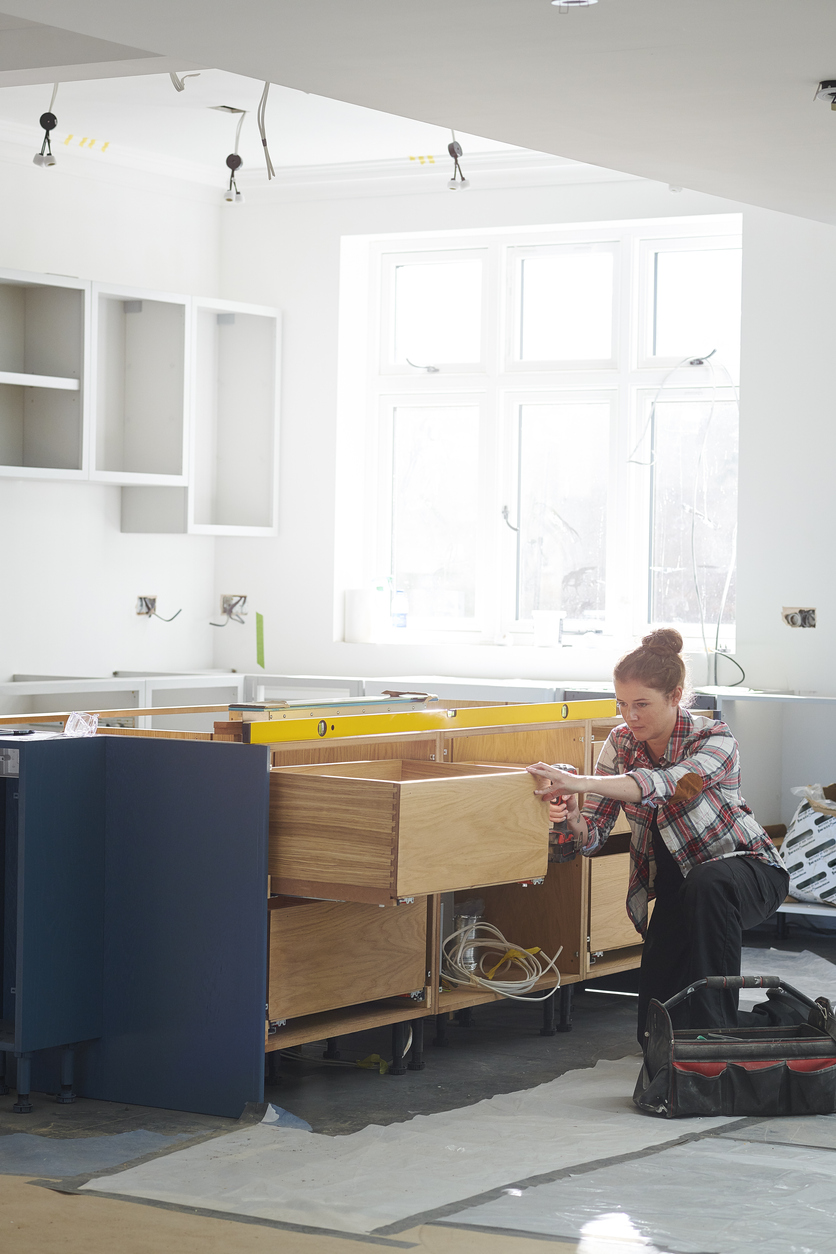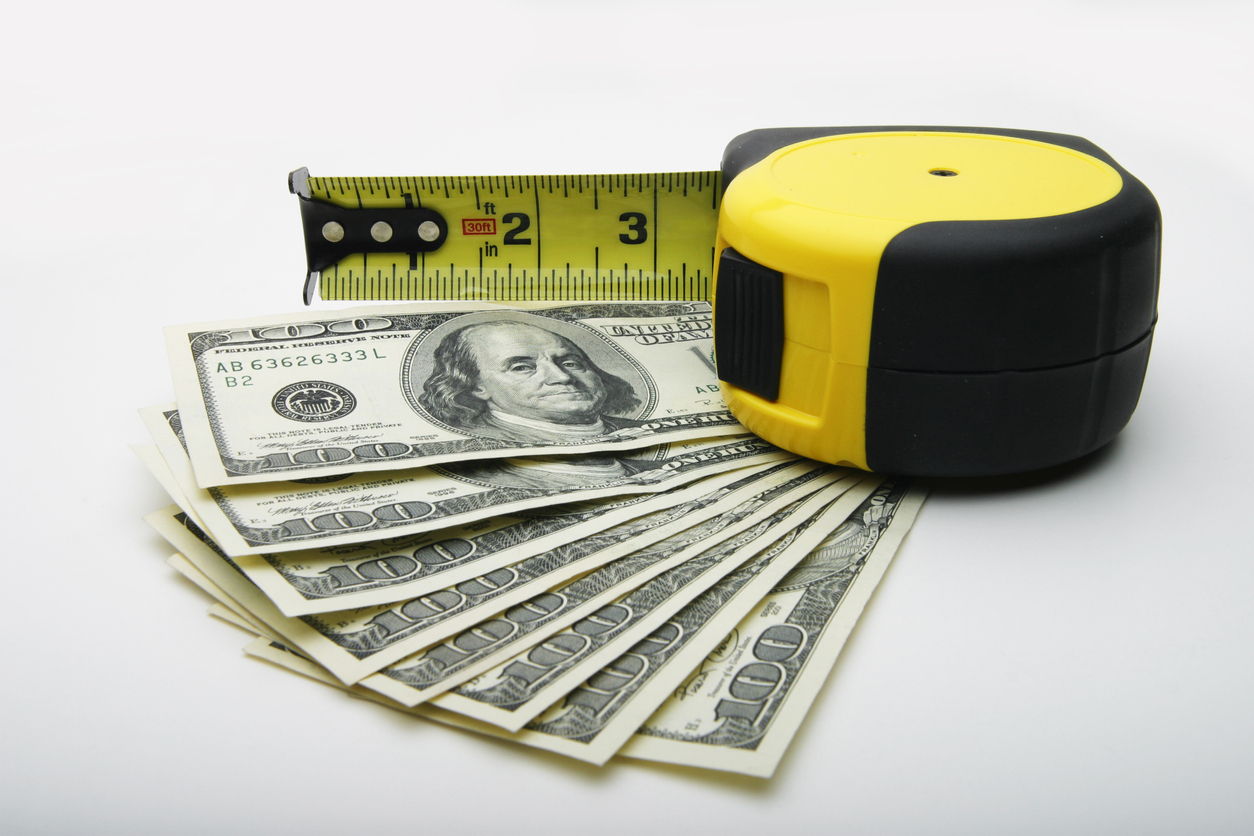We may earn revenue from the products available on this page and participate in affiliate programs. Learn More ›
As a homeowner, you will experience the need to make repairs from time to time. Whether you need a new roof, window, or kitchen, chances are you’ll find home improvement loans handy. Whichever project you plan to take on in your home, it’s likely not going to be cheap. For example, Investopedia reports that a bathroom remodel alone typically costs more than $23,000 in the United States. To give you another idea, the national average of a new roof is $7,885, according to Home Advisor.
While remodeling can be exciting, don’t rush off to apply for a loan just yet. There are five things you should know first.
1. Home improvement loans are typically one of two types of loans: home equity loan or a personal loan.
A home improvement loan allows you to have the money upfront to purchase any necessary materials for your repairs or remodel. The term “home improvement loan” isn’t a specific offering that lenders use. It’s just a blanket term for one of two types of loans: a home equity loan or an unsecured personal loan for a project. Different types of funding will be available depending on the type of loan you choose, and lenders vary in interest rates, so it’s important to read through the fine print of each option and see which you qualify for and which best fits your needs.
- Home Equity Loan: This loan will allow you to use the equity of your home as collateral. You will then have that line of credit to use towards your repairs or improvements. It’s a popular option; more than 10 million people are expected to take out a home equity line of credit between 2018 and 2022, according to a Transunion report. The process of obtaining this type of home improvement loan is typically more involved than a personal loan. The time frame for approval could take just days or up to six weeks. It depends on the value of your home and how much equity you have, along with your financial situation. Since the longest is about six weeks, it’s ideal to seek out a home equity loan at least a few months before you begin your project, that way you can budget accordingly. You can ask your local bank if they have a home equity loan or you could seek out options from places like Bank of America, Wells Fargo, or Discover.
- Personal Home Loan: A personal loan is offered by several banks, credit unions, and online lenders. Usually, a borrower would need excellent credit to be considered. However, fair to low credit scores can still get approved, depending on your financial situation. Since there are many lenders, it’s ideal to shop around. Your local bank likely offers personal loans (most do), or you might find a lender online like Discover. Applying for a personal loan is straightforward; still, start at least a month or two ahead of time as it may take anywhere from one day to a few weeks for approval.

2. Carefully consider the size of the home improvement loan you’ll need, because more money is not always better.
Investing too much money into your home improvement project can be problematic for two reasons: you may borrow more money than you can pay back in a timely manner and you may over-invest in your home. First, check your equity. If you have less money invested in your home than what you owe, there is a larger risk of defaulting on a renovation loan. Second, assess the value your project will add to the home. It’s important to only borrow money to make improvements in your home if doing so will increase the value of your home or reduce your long-term costs—that way you will essentially be earning your money back. For example, if you increase the value, you will be able to ask for a higher price when you sell.
After you decide on the size of the loan you need, you may meet with different lenders about that sum and compare interest rates. Many of them may offer similar packages but at different interest rates. Sometimes paying off the loan faster can help with interest. If you know that you can pay it off sooner, always choose the lower term during the application process to help get a lower APR.
3. Consider your eligibility to see which home improvement loans you may qualify for.
Before you dive into an application for any type of loan, you should consider how qualified you are for the home improvement loan. Take a good in-depth look at your credit report, which you can find on Credit Karma, Credit Sesame, Transunion, or Experian websites. Are your credit card and bill payments on time? If not, work on that first, because it can be a huge factor in whether you are approved and what interest rates are available to you. A FICO credit score of 620 or higher will usually be needed to receive approval, however, some borrowers may allow a score of 580. The lower your credit score, the higher your interest rate will be.
The debt-to-income ratio will be included in the qualification process. You can figure this out by dividing the sum of your monthly debts (i.e. your mortgage, auto loan, personal loans, etc.) by your monthly gross income. The majority of home equity lenders will follow the Consumer Financial Protection Bureau’s recommendation that a debt-to-income ratio should not be any higher than 43 percent. However, some personal loans allow borrowers to have a 50 percent debt-to-income ratio.
RELATED: 11 Tips for Getting a Loan on Your Next House
4. Choose a personal loan over a home equity loan for faster funding.
If you are looking for fast approval and funding, a personal loan would be more ideal than a home equity loan as it takes longer to get approved. Using a personal loan for home improvement will work like any other unsecured personal loan: Your interest rate will depend on your credit score, and you will have the flexibility and reassurance of a fixed interest rate so you can schedule monthly payments within your budget. Usually, personal loans are available between the amounts of $1,000 and $100,000. The pros of a personal loan include the ability to borrow a smaller amount and no stress over equity. The cons are shorter repayment methods and higher interest rates. According to Investopedia, the average annual percentage rate on a personal loan with a 24-month term is 10.21 percent. The rate you pay can range from 6 percent to 35 percent, and the determining factor is your credit score.

5. Consider alternative options if you don’t qualify for other home improvement loans.
If you are looking for an alternative to home improvement and personal loans because of eligibility, there are a few other options. In the end, what you choose should depend on which type of loan, line of credit, or program will fit your needs the best.
- Equity line of credit: A home equity line of credit will give you the ability to use the equity in your home as collateral. You can borrow only as much as you need, which is a major advantage. According to Bankrate, you can also deduct the interest of your home equity line of credit on your taxes if you use the funds to make improvements to your home. Check with your tax specialist to find out how to qualify for this.
- Energy-efficient mortgage program: With this Federal Housing Administration (FHA) program, homeowners can finance cost-effective energy-efficiency improvements such as solar panel installations and furnace duct repairs. Contact a FHA-approved lender for this program to learn more and apply. You may have to get a home energy assessment that will evaluate your home’s energy efficiency and determine if you qualify.
- Cash-Out refinancing: A cash-out refinance is like a new mortgage. Rather than taking out a mortgage, a cash-out refinance will replace your original mortgage as your primary mortgage. You will be able to access your equity to receive cash at closing that you will be able to use for home improvements. Your new home loan will have a new payment, balance, terms, and rates. According to Lending Tree, rates with cash-out refinancing are typically lower than retail home improvement credit cards, regular credit cards, and personal loans.
